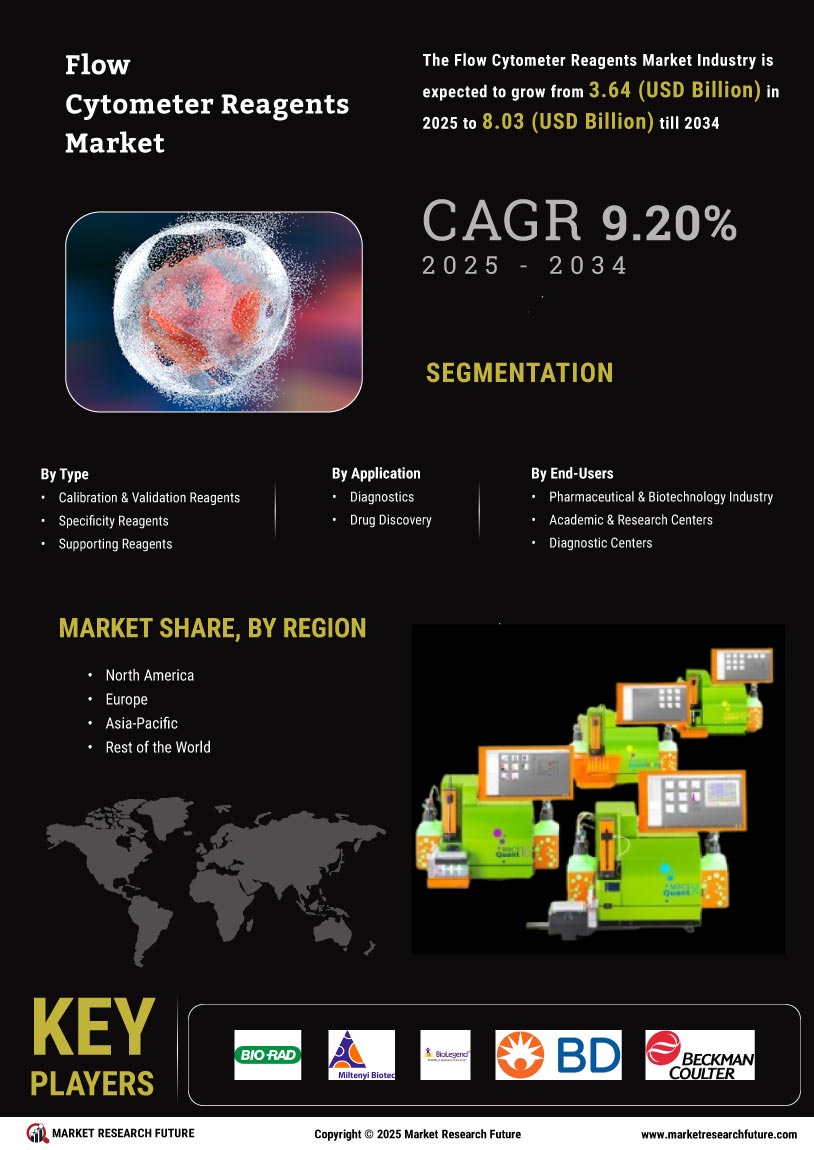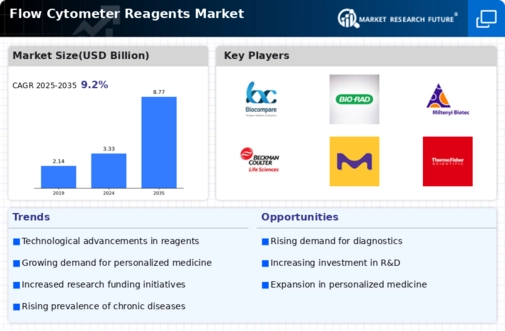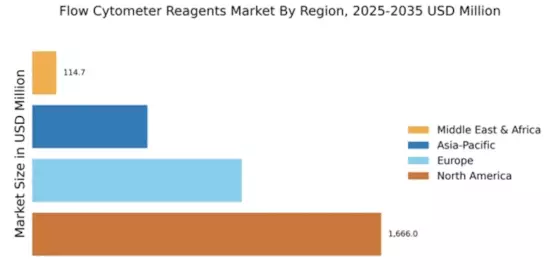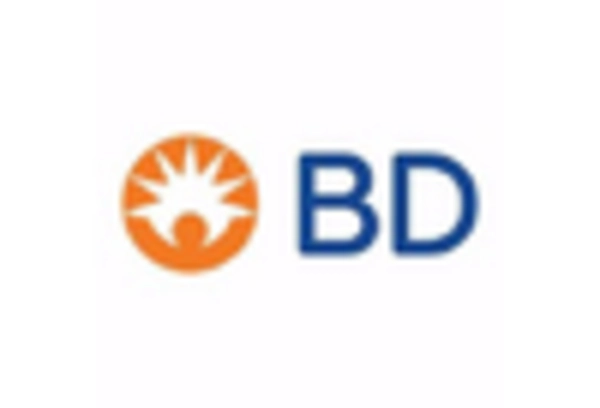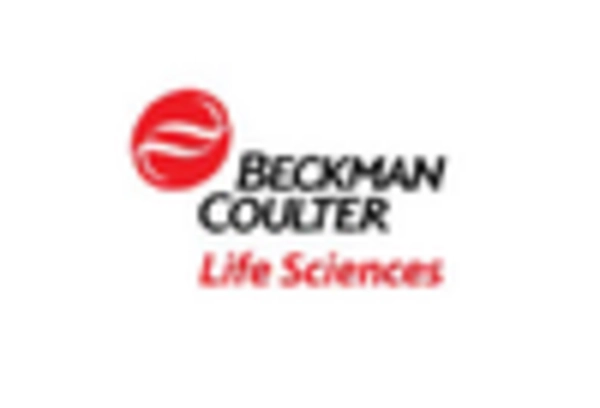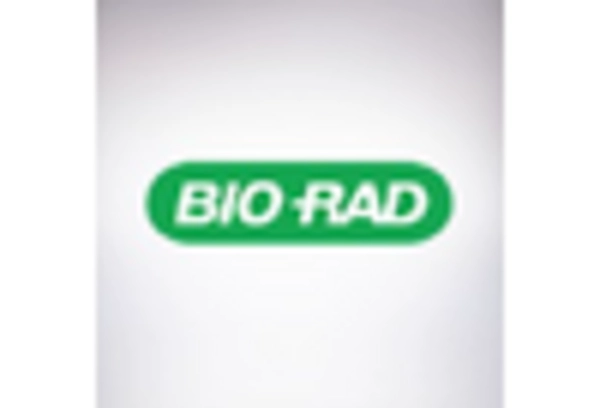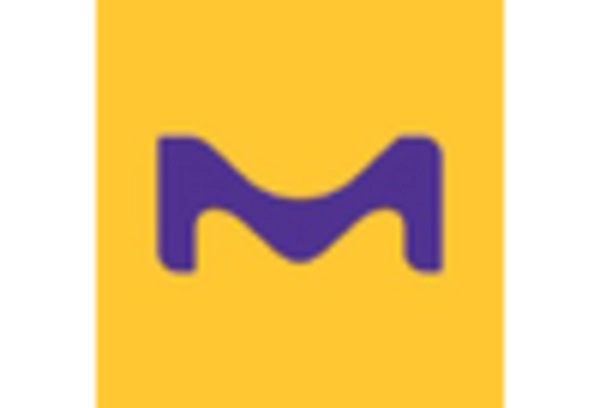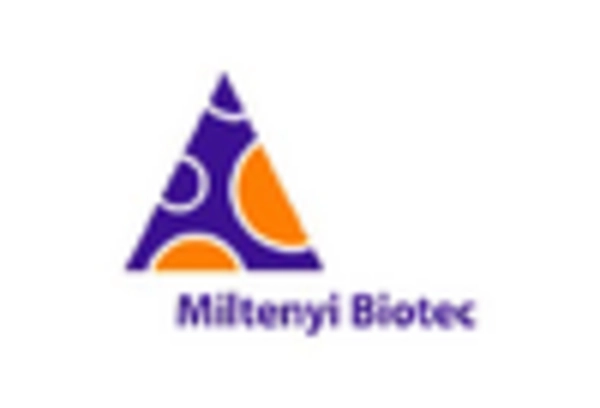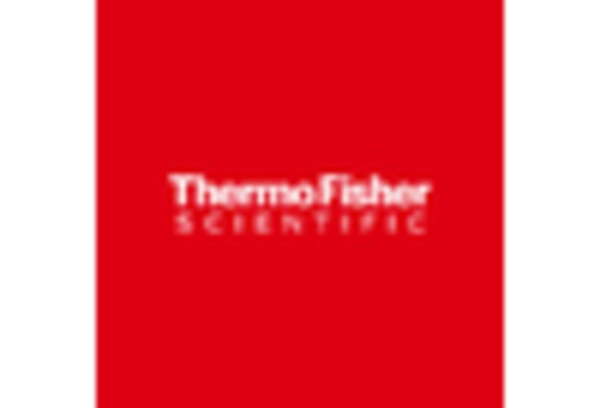Emerging Markets and Global Expansion
Emerging markets present a significant opportunity for the Global Flow Cytometer Reagents Market Industry. As countries invest in healthcare infrastructure and research capabilities, the demand for flow cytometry reagents is expected to rise. Regions such as Asia-Pacific and Latin America are becoming increasingly important as they adopt advanced technologies and methodologies in clinical and research environments. This global expansion is likely to contribute to the overall growth of the market, as companies seek to establish a presence in these burgeoning markets, thereby enhancing accessibility to flow cytometry solutions and reagents.
Technological Advancements in Flow Cytometry
Technological advancements play a crucial role in shaping the Global Flow Cytometer Reagents Market Industry. Innovations such as multi-parameter analysis and improved fluorescent labeling techniques enhance the capabilities of flow cytometers, allowing for more detailed cellular characterization. These advancements not only improve the efficiency of research and clinical applications but also expand the range of potential applications in immunology, oncology, and stem cell research. As a result, the market is anticipated to grow at a CAGR of 9.2% from 2025 to 2035, indicating a strong trajectory fueled by continuous innovation and the introduction of novel reagents.
Rising Investment in Research and Development
The Global Flow Cytometer Reagents Market Industry benefits from increasing investments in research and development across various sectors, including pharmaceuticals and biotechnology. As organizations prioritize the development of new therapies and diagnostic tools, the demand for flow cytometry reagents rises correspondingly. This trend is particularly evident in the context of personalized medicine, where precise cellular analysis is essential for tailoring treatments to individual patients. The influx of funding into R&D initiatives is expected to bolster the market, contributing to its growth and expansion in the coming years, as stakeholders recognize the value of flow cytometry in advancing scientific discovery.
Increasing Demand for Advanced Diagnostic Tools
The Global Flow Cytometer Reagents Market Industry experiences a surge in demand for advanced diagnostic tools, driven by the growing prevalence of chronic diseases and the need for precise cellular analysis. As healthcare providers seek to enhance diagnostic accuracy, flow cytometry emerges as a pivotal technology. The market is projected to reach 3.33 USD Billion in 2024, reflecting a robust interest in innovative reagents that facilitate complex analyses. This trend is likely to continue as the industry adapts to evolving healthcare needs, potentially leading to a more significant market presence by 2035, when it is expected to reach 8.77 USD Billion.
Growing Applications in Clinical and Research Settings
The Global Flow Cytometer Reagents Market Industry is witnessing an expansion in applications across clinical and research settings. Flow cytometry is increasingly utilized in various fields, including immunology, hematology, and cancer research, due to its ability to provide rapid and accurate analysis of cell populations. This growing versatility enhances the appeal of flow cytometry, leading to a broader adoption of reagents tailored for specific applications. As the market evolves, it is likely to see a diversification of products that cater to these expanding applications, further driving growth and innovation within the industry.
